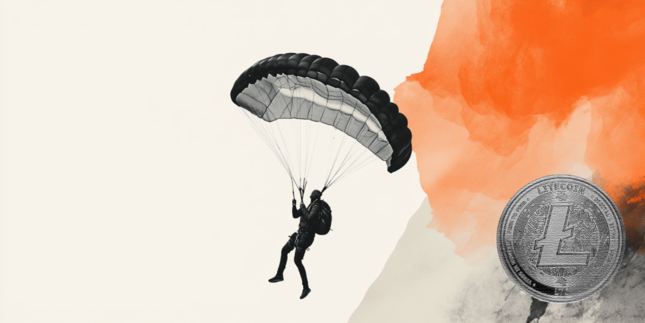USD/CAD Exchange rate
Editors’ Picks

EUR/USD struggles for direction amid USD gains
EUR/USD is trimming part of its earlier gains, coming under some mild downside pressure near 1.1730 as the US Dollar edges higher. Markets are still digesting the Fed’s latest rate decision, while also looking ahead to more commentary from Fed officials in the sessions ahead.

GBP/USD drops to daily lows near 1.3360
Disappointing UK data weighed on the Sterling towards the end of the week, triggering a pullback in GBP/USD to fresh daily lows near 1.3360. Looking ahead, the next key event across the Channel is the BoE meeting on December 18.

Gold losses momentum, challenges $4,300
Gold now gives away some gains and disputes the key $4,300 zone per troy ounce following earlier multi-week highs. The move is being driven by expectations that the Fed will deliver further rate cuts next year, with the yellow metal climbing despite a firmer Greenback and rising US Treasury yields across the board.

Litecoin Price Forecast: LTC struggles to extend gains, bullish bets at risk
Litecoin (LTC) price steadies above $80 at press time on Friday, following a reversal from the $87 resistance level on Wednesday. Derivatives data suggests a bullish positional buildup while the LTC futures Open Interest declines, flashing a long squeeze risk.

Big week ends with big doubts
The S&P 500 continued to push higher yesterday as the US 2-year yield wavered around the 3.50% mark following a Federal Reserve (Fed) rate cut earlier this week that was ultimately perceived as not that hawkish after all. The cut is especially boosting the non-tech pockets of the market.
Majors
Cryptocurrencies
Signatures
USD/CAD
The USD/CAD represents how many Canadian Dollars (the quote currency) are needed to purchase one US Dollar (the base currency). The nickname “Loonie” originates from the Gold-colored Canadian one-dollar coin introduced in 1987 and produced by the Royal Canadian Mint in Winnipeg.
The coin reverse features a common loon, a bird found throughout Canada, while the obverse displays the portrait of Queen Elizabeth II, the nation's former head of state.
HISTORIC HIGHS AND LOWS FOR USD/CAD
- All-time records: Max: 1.6192 on 18/01/2002 – Min: 0.9059 on 01/11/2017
- Last 5 years: Max: 1.4668 on 19/03/2020 – Min: 1.2007 on 01/06/2021
* Data as of December 2024
USD/CAD 2025 FORECAST
In the USD/CAD 2025 Forecast, FXStreet analyst Joshua Gibson suggests uncertainty and risk-off sentiment could strengthen the US Dollar (USD) early in 2025, while the Canadian Dollar (CAD) is expected to weaken in the first quarter. However, CAD investors may reassess prospects as the year progresses, focusing on the Federal Reserve (Fed)- Bank of Canada (BoC) policy dynamics.
From a technical point of view, USD/CAD could face a technical ceiling near the 1.4400 level after the Canadian Dollar's sharp 8.5% decline in 2024 sent the pair to 56-month highs. However, technical indicators like the MACD suggest caution, as short positions may only become viable once clear sell signals emerge, likely during the first quarter.
INFLUENTIAL CURRENCIES FOR USD/CAD
The Japanese Yen (JPY) and the Euro (EUR). Another important group of influent pairs includes: EUR/USD, GBP/USD, USD/JPY, AUD/USD, USD/CHF and NZD/USD.
MOST INFLUENTIAL ORGANIZATIONS FOR USD/CAD
- The Bank of Canada (BoC) is the nation's central bank. Its principal role, as defined in the Bank of Canada Act, is "to promote the economic and financial welfare of Canada." The BoC sets interest rates and manages monetary policy at eight scheduled meetings a year and ad hoc emergency meetings that are held as required. The BoC’s primary mandate is to maintain price stability, which means keeping inflation at between 1-3%. Its main tool for achieving this is by raising or lowering interest rates. Relatively high interest rates will usually result in a stronger Canadian Dollar (CAD) and vice versa. Other tools used include quantitative easing and tightening.
- The Federal Reserve (Fed) is the central bank of the United States (US) and it has two main targets: to maintain the unemployment rate at its lowest possible levels and to keep inflation around 2%. The Federal Reserve System's structure is composed of the presidentially appointed Board of Governors and the partially appointed Federal Open Market Committee (FOMC). The FOMC organizes eight scheduled meetings in a year to review economic and financial conditions. It also determines the appropriate stance of monetary policy and assesses the risks to its long-run goals of price stability and sustainable economic growth. The FOMC Minutes, which are released by the Board of Governors of the Federal Reserve weeks after the latest meeting, are a guide to the future US interest-rate policy.